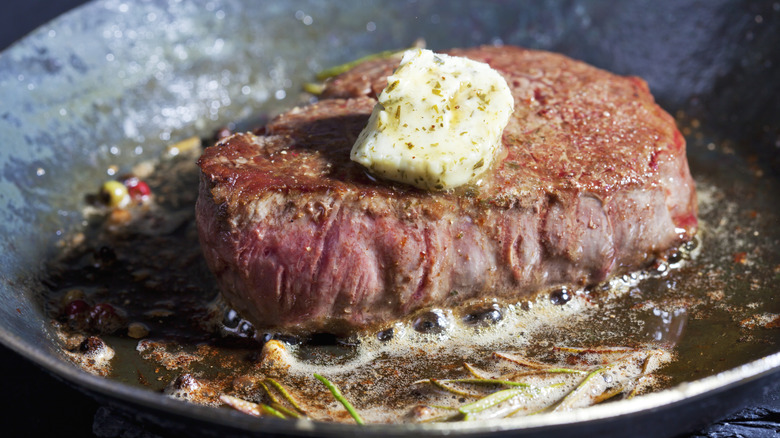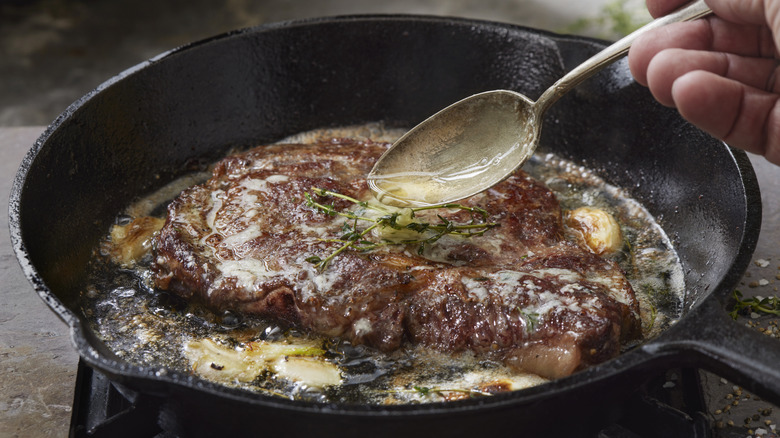Do You Really Need Butter For A Better Steak?
Preparing the perfect steak requires technique. The steak cut you buy will affect the overall flavor and cook time, but it goes beyond just searing it over heat. Temperature, seasonings, and yes, butter, all make a big difference in steak's flavor. However, at what point you add the butter can mean the difference between a delicious piece of meat and one that tastes burnt. But when done properly, butter's rich, salty flavor infuses into the meat, enhancing the steak's taste.
The biggest pro to using butter is the flavor it brings, but there are some cons. Namely, butter doesn't have a high smoke point, so you can't just sear your steak in it with ease. If it hits a temperature of 350 degrees Fahrenheit or higher, it burns. To get that golden crust on the steak's outside while cooking its inside to medium-rare, you need to sear it in a pan that's hotter than butter's natural smoke point — somewhere between 450 and 500 degrees Fahrenheit. So, for searing, use a neutral oil instead of butter.
While some chefs argue that butter isn't necessary at all, there are two ways to add butter to steak to build serious flavor. One is butter-basting, which happens during the cooking process. The other is simply melting butter around the steak while it rests.
How to incorporate butter into your steak
Instead of searing steak in butter, use the butter-basting method — a practice of coating the steak in brown butter while it cooks. The biggest advantage of this method is that the high heat facilitated by the fat in butter enhances the Maillard reaction, which ultimately results in a steak with a deeply caramelized crust and richer flavor. Also, the butter browns in the pan, giving it a borderline sweetness that resembles toffee, contrasting nicely with the fatty, rich meat.
Be aware that this method requires you to remain with the steak at pretty much all times and keep the butter moving in the pan; otherwise, it will burn, and your meat may not be evenly cooked or flavored. If you like to be able to walk away for a moment while cooking your steak, butter-basting may not be for you. It also doesn't work well for cooking thin steaks.
If you're working with thinner steaks or seeking a less intensive technique, incorporate butter as the steak rests. While you won't get that brown-butter caramelized reaction that butter-basting gives, you'll still give the butter time to soak into the meat. For this method, add butter to the dish you plan to serve the steak on, then place the steak directly on top of it. For even more richness, add a little butter on top; it adds a lovely glossy finish in addition to flavor. Finally, you can infuse other flavors into the butter, too. Blue cheese compound butter is a rich, decadent choice, while garlic and lemon zest are also tasty additions. With these two buttery methods available, there's no reason not to add that decadence to your next steak.

